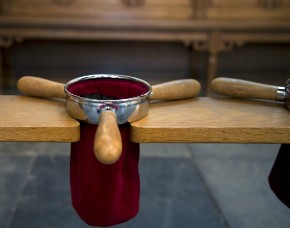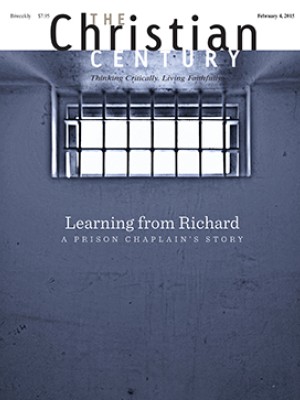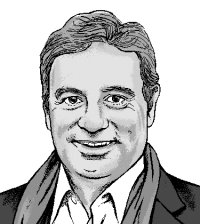Business of the kingdom
The New Testament offers two compelling models for our relationship with money. When translated into a vision for a whole society, each is flawed.

The New Testament gives us two inspiring calls to transform our relationship to money. Jesus tells a young man, “Go, sell what you own, and give the money to the poor, and you will have treasure in heaven; then come, follow me” (Mark 10:21). The early church had an equally compelling model: “All who believed were together and had all things in common; they would sell their possessions and goods and distribute the proceeds to all, as any had need” (Acts 2:44–5).
In the imagination of many Christians there’s a perpetual sense that this is what our relationship to money would be like if we were doing it properly. But on closer look, the picture that Acts 2 offers is different from the one seen in Jesus’ words to the rich young man. The rich young man model is about living vulnerably before God and simply following Jesus. The Acts 2 model is about making a collective commitment and finding the activity of the Holy Spirit in the worship and practices of a community. Both models are compelling, but they’re not the same. The two dominant kinds of medieval monasticism—the mendicant friars and the wealthy monasteries—represent these two poles of the ideal of somehow getting money right. But both models turn out to be flawed when translated into a vision for a whole society.
Read our latest issue or browse back issues.
For the most part the church has found these two models too challenging to implement and too disruptive to be sustainable. Two other models have emerged. The first is the benefactor model. The benefactor is not willing or able to make a monk or mendicant’s commitment, but he or she wants the church to flourish, wants to be close to God, and wants to go to heaven. So the benefactor finances the flourishing of those who have made all-encompassing commitments. The benefactor model is tied to a class structure of squirearchy, an ethos of noblesse oblige, and a dualist material-spiritual divide where the church exists in order to cleanse the earthy, fleshly world of its more unrefined qualities and make it fit to stand before God.
The other model that has shaped the imagination of the church—precisely because it doesn’t demand wholehearted commitment—is stewardship. Prior to the Reformation the normative ethical agent was a monk or a priest. After the Reformation the ethical agent was a layperson who owned disposable wealth and was most likely engaged in profitable business. Christianity became a bourgeois phenomenon.
The Church of England was largely established on the benefactor model. Some decades ago the sums ceased to add up. It’s important to note that this isn’t primarily about real or perceived decreases in congregation size, because under the benefactor model congregation size isn’t an especially important factor in how money works in the church. It’s about sociological changes: how long retired clergy live; what constitutes reasonable provision for retired people; whether the noblesse feel as obliged as they used to, given that members of the ancient aristocracy are not so fixed in their estates as they once were; and the shift of the population to cities, where relationships of unspoken obligation are different from age-old practices in the country.
The Church of England is in a financial plight because it has shifted somewhat abruptly from a benefactor model that affirmed hierarchies, perhaps enshrined mixed motives, and was hopelessly tied to an outdated class and patronage system. At the same time, the church was directing attention to the parish, the nation, and the wider goods of the kingdom, and to a stewardship model that can galvanize a congregation. Yet it tended to leave the notion of mission to the imagination of the wealthier congregation members.
St. Martin-in-the-Fields in London worked on the benefactor model for many years—longer than most urban churches. Suddenly in the 1980s the church realized that the costs of the building and the extensive outreach ministry far exceeded the potential of congregational stewardship. The answer was to create a commercial enterprise. Twenty-eight years later the result is that St. Martin’s has been able to maintain and expand its ability to extend its mission—well beyond the imaginations of its most generous members and donors.
But there’s more to it than that. Originally the food services, retail, events, and commercial concerts were largely seen as a worldly cash cow that underwrote the lofty spiritual mission and ministry of the church. But the business has ended up teaching the congregation a lot about the kingdom. With its 110 staff hailing from more than 25 countries, it’s a microcosm of the idea of a multicultural society. Meanwhile St. Martin’s now offers a unique range of cultural, commercial, and charitable programs rooted in a vibrant congregational life. It’s a vision of a civil economy, of what work and play, friendship and worship, social concern and evangelism, diversity and identity might look like.
The moral is this: God gives us the abundance of the kingdom to renew the poverty of the church. If the church is a cul-de-sac or a quagmire, invest in the kingdom. Don’t be cynical about benefaction or lament the demise of stewardship: see the new thing that the Spirit is doing today.






